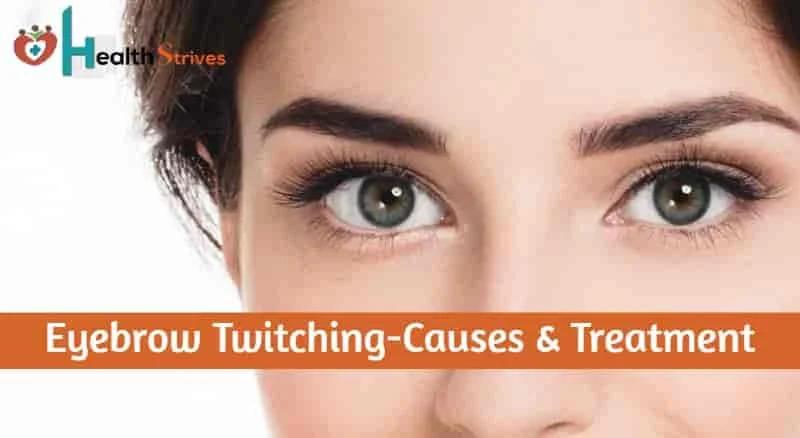Understanding Eyebrow Twitching: Causes, Treatments, and When to Seek Help

Eyebrow twitching, medically known as myokymia, is a common phenomenon that many individuals experience at some point in their lives. While often harmless, it can be bothersome and may raise concerns about underlying health issues. In this comprehensive guide, we will delve into the causes, treatments, and when it's necessary to seek medical attention for eyebrow twitching.
Understanding Eyebrow Twitching
Eyebrow twitching refers to the involuntary, repetitive movement of the muscles in and around the eyebrow area. These twitches can vary in intensity, duration, and frequency. While they typically resolve on their own without medical intervention, persistent or severe twitching may indicate an underlying problem.
Causes of Eyebrow Twitching
-
Stress and Fatigue: One of the most common causes of eyebrow twitching is stress and fatigue. Prolonged periods of stress or lack of sleep can lead to muscle fatigue and irritability, resulting in twitching of the eyebrows.
-
Eye Strain: Excessive use of digital screens, reading for long periods, or focusing on close-up work without breaks can strain the eyes and trigger eyebrow twitching.
-
Caffeine and Stimulants: Consumption of excessive caffeine or other stimulants can overexcite the nervous system, leading to muscle twitching, including in the eyebrows.
-
Nutritional Deficiencies: Deficiencies in certain nutrients like magnesium or potassium may result in muscle spasms, including eyebrow twitching.
-
Dry Eyes: Insufficient lubrication of the eyes can cause irritation and twitching of the eyelids and eyebrows.
-
Eyestrain: Prolonged use of digital screens or reading for extended periods without breaks can strain the eyes, leading to eyebrow twitching.
-
Neurological Conditions: In some cases, eyebrow twitching may be a symptom of underlying neurological conditions such as Bell's palsy, multiple sclerosis, or Parkinson's disease. However, these conditions typically present with other symptoms as well.
Treatment and Management
-
Stress Management: Practicing stress-reducing techniques such as meditation, yoga, or deep breathing exercises can help alleviate eyebrow twitching caused by stress.
-
Adequate Sleep: Ensuring an adequate amount of sleep each night can help reduce muscle fatigue and twitching.
-
Limiting Caffeine: Cutting back on caffeine and other stimulants can help reduce the frequency and intensity of eyebrow twitching.
-
Eye Care: Taking breaks from screens, using lubricating eye drops, and maintaining good eye hygiene can help prevent dry eyes and associated twitching.
-
Nutritional Supplements: In cases where nutritional deficiencies are suspected, supplementation with magnesium, potassium, or other relevant nutrients may be beneficial.
-
Medical Treatment: If eyebrow twitching persists despite self-care measures or is accompanied by other concerning symptoms, it's important to seek medical attention. A healthcare professional can help identify any underlying conditions and recommend appropriate treatment.
-
Botulinum Toxin Injections: In severe cases of persistent eyebrow twitching, injections of botulinum toxin (Botox) may be recommended to temporarily paralyze the muscles and reduce twitching.
When to Seek Medical Attention
While most cases of eyebrow twitching resolve on their own, there are certain instances where medical evaluation is warranted:
-
Persistent Twitching: If eyebrow twitching persists for more than a few weeks despite efforts to alleviate it, medical evaluation may be necessary.
-
Associated Symptoms: If eyebrow twitching is accompanied by other symptoms such as facial drooping, weakness, or changes in vision, it may indicate an underlying neurological condition and should be evaluated by a healthcare professional.
-
Impact on Quality of Life: If eyebrow twitching significantly interferes with daily activities, work, or social interactions, it's advisable to seek medical advice.
-
Previous Medical Conditions: Individuals with a history of neurological disorders or other medical conditions may need to be monitored more closely if they experience eyebrow twitching.
Conclusion
Eyebrow twitching is a common and usually benign occurrence that can be triggered by various factors such as stress, fatigue, and eye strain. While most cases resolve on their own or with simple self-care measures, persistent or severe twitching may warrant medical evaluation to rule out underlying health issues. By understanding the causes, treatments, and when to seek help for eyebrow twitching, individuals can effectively manage this condition and maintain optimal eye health and overall well-being.
- Questions and Answers
- Opinion
- Motivational and Inspiring Story
- Technology
- Live and Let live
- Focus
- Geopolitics
- Military-Arms/Equipment
- Seguridad
- Economy
- Beasts of Nations
- Machine Tools-The “Mother Industry”
- Art
- Causes
- Crafts
- Dance
- Drinks
- Film/Movie
- Fitness
- Food
- Juegos
- Gardening
- Health
- Home
- Literature
- Music
- Networking
- Other
- Party
- Religion
- Shopping
- Sports
- Theater
- Health and Wellness
- News
- Culture

